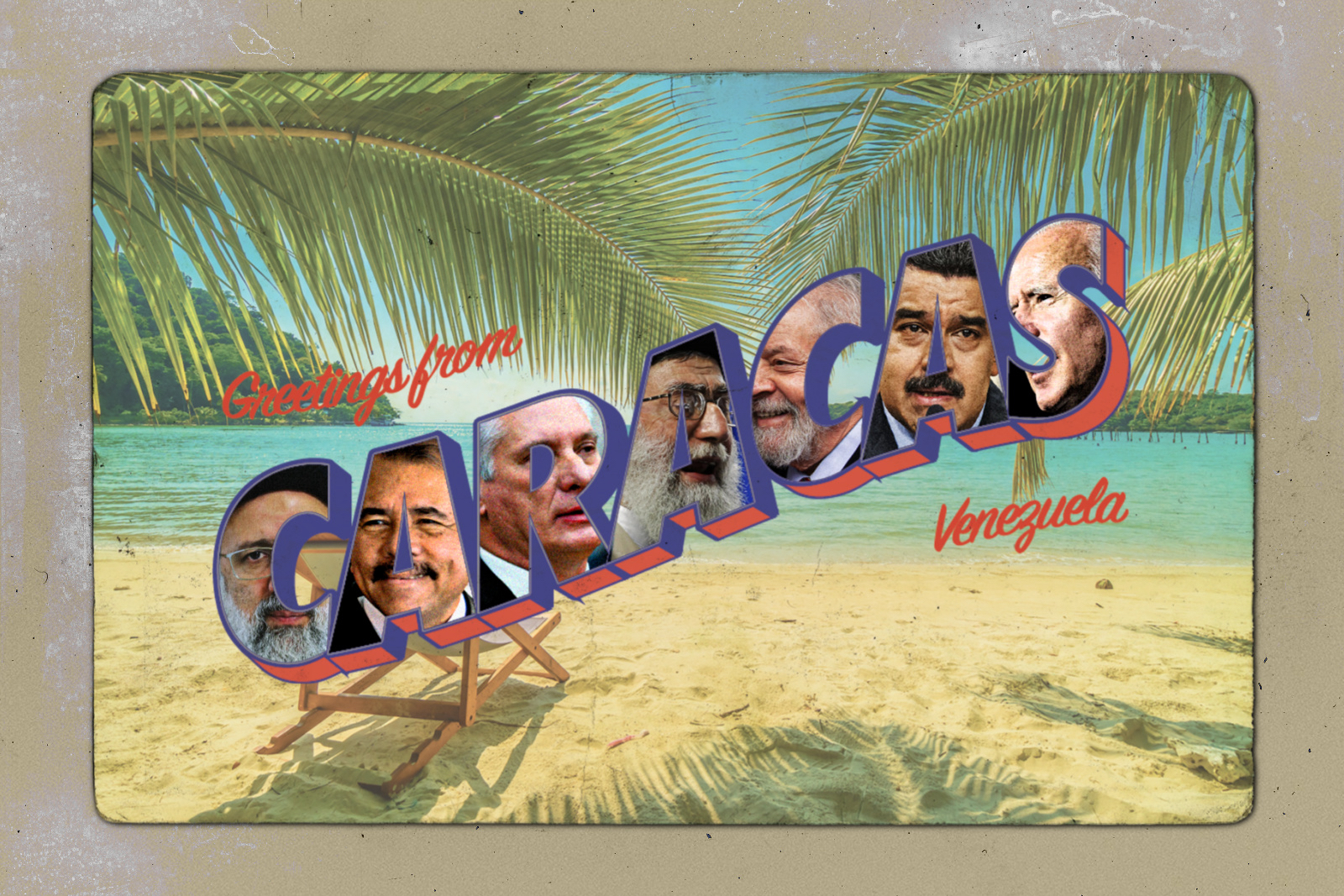
What Did Iran’s Raisi Accomplish with his Latin American Tour?
Iranian President Ebrahim Raisi embarked on a Latin American tour in mid-June, visiting Cuba, Nicaragua, and Venezuela. During his visit, he held meetings with Presidents Miguel Díaz-Canel, Daniel Ortega, and Nicolás Maduro, respectively. The tour lasted five days and resulted in several agreements, although none were groundbreaking. However, considering the well-known tensions between Washington and these four governments, Washington viewed the visit with some concern. It is worth noting that this visit followed a controversial port call by two Iranian warships to Brazil’s Rio de Janeiro a few months prior.
Raisi’s first destination was Venezuela, where he stated, “The nations of Iran and Venezuela have shared enemies who do not wish us to live independently,” referring to Washington. According to Al Jazeera, Presidents Raisi and Maduro, along with their ministers, signed “more than two dozen agreements” covering oil and petrochemical development, maritime transport, agriculture, medicine, information technology, insurance, and cultural ties. As part of the visit, a conference entitled “Meeting of the Venezuelan Youth with Iran – Caracas 2023” was held, as shown in a tweet by Maduro showing young Venezuelans holding Iranian and Venezuelan flags.
Raisi then visited Nicaragua, where President Daniel Ortega paid homage to Iranian heroes and martyrs, particularly General Qassem Soleimani, who was killed by a U.S. drone strike in 2020. The Iranian president openly criticized Washington, stating, “The United States wanted to paralyze our people with threats and sanctions, but they have not succeeded.”
Finally, Raisi concluded his five day tour by traveling to Cuba. Cuba’s Miguel Díaz-Canel promised to visit Tehran later in the year, and the two sides signed six agreements, including a political cooperation roadmap. Notably, unlike the visits to Nicaragua and Venezuela, Voice of America reported that public remarks by Iranian and Cuban officials focused on cooperation and exploring new business opportunities, rather than criticizing the United States. It is important to mention that bilateral relations between Havana and Washington have remained stagnant. In a March interview with state-run Prensa Latina, Deputy Minister for Foreign Affairs Carlos Fernández de Cossío remarked that bilateral relations have not improved.
This Latin American tour marked Raisi’s first visit to the region since assuming office in 2021. Upon returning to Tehran, he announced that contracts worth $90 million were signed in the knowledge-based sector with the private sector, as reported by Iranian state-run media.
Iran’s engagement with the Western Hemisphere has been complicated. While the region has witnessed notorious terrorist attacks by Hezbollah in Argentina in the early 1990s, some governments have pursued friendlier relations with Iran in recent times. The choice of Cuba, Nicaragua, and Venezuela as destinations for Raisi’s visit is not surprising, given the animosity their governments hold towards Washington.
Venezuela’s Nicolás Maduro emphasized the significance of the visit as a milestone in the relationship between the two countries, highlighting their shared ideology. Caracas and Tehran are suspected of working jointly in trying to bypass international sanctions against both nations. Similarly, concerns have been raised about military cooperation between Iran and Nicaragua.
Unsurprisingly, the U.S. government monitors Iran’s interest in these three countries (and the Western Hemisphere in general). For example, U.S. Southern Command regularly mentions Iran in its Posture Statements. The Command’s 2023 Posture Statement explains that “Iran is focused on rebuilding its economic and diplomatic ties in the region and pursuing opportunities to circumvent U.S. sanctions. Tehran’s intelligence and security activities continue to be a concern and over the past two years Iran has increasingly used Venezuela to assert its presence in the region.”
It is important to highlight that concerns about the Iranian government extend beyond foreign policy, including ongoing repression against its own people. Repressive actions against the ethnic Azerbaijani population and the heavy-handed response to the ongoing protests throughout Iran have drawn international criticism.
Discrimination against ethnic minorities, including Khuzestani Arabs, Azerbaijani Turks, Baloch people, Kurds, and Turkmen remains prevalent, limiting their access to education, employment, adequate housing, and political representation. Language rights have also been a contentious issue, as Persian remains the sole language of instruction in primary and secondary education. The Azerbaijani population in Iran, comprising around 30 million people, faces repression aimed at eroding their culture and identity. Repressive actions could be viewed as a means to control the Azeri population and punish Azerbaijan’s foreign policy, including its closer ties with Israel.
Ebrahim Raisi’s visit to Cuba, Nicaragua, and Venezuela is significant, considering the mutual support sought by these four dictatorial governments. While no major groundbreaking agreements were reported, the visits hold importance. They also come shortly after Iranian warships docked in Brazil, raising questions about a potential Iranian strategy to engage with allies and potential allies in the Western Hemisphere. The statement by Raisi about expanding ties with independent nations during his visit to Nicaragua is worth remembering.
The Iranian government remains a pariah and a destabilizing factor internationally, with concerns extending beyond its foreign policy. Ongoing repression against its own population, including protests and discrimination against ethnic minorities, demands greater media attention.
